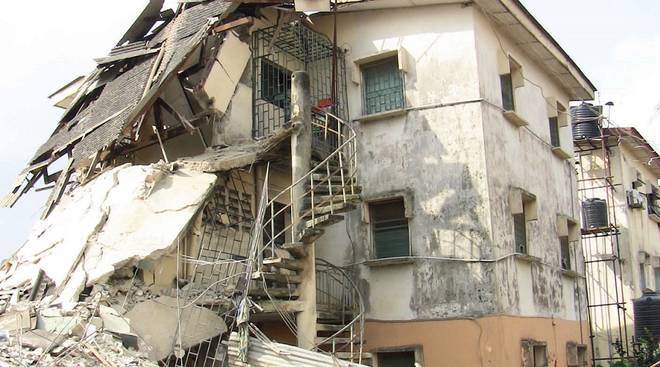Building collapse antecedents, prevention and mitigation measures
Building collapse occurs when part or whole body of a structure fails and suddenly gives way to the inability of the structure to meet the purpose for which it was meant for. The collapse of major infrastructure is a global phenomenon, not excluding even the advanced economies. Of recent Italy suffered its second road bridge […]

Building collapse occurs when part or whole body of a structure fails and suddenly gives way to the inability of the structure to meet the purpose for which it was meant for. The collapse of major infrastructure is a global phenomenon, not excluding even the advanced economies. Of recent Italy suffered its second road bridge collapse in 15 months in the northwest region of Liguria, raising major questions about the safety of the country’s aging infrastructure. According to highway experts, the reason was attributed to “exceptional rain” that caused a huge landslide from a nearby hillside.
In Nigeria many lives and properties have been lost in the collapse of buildings in many of the big cities. In Lagos, 33 cases were recorded within a period of 9 years (2007-2016). However, cases and casualties of building collapse in the FCT within 10-year period (2008-2018) are relatively less than many other cities in the country. Worthy of note is the fact that major building collapse just as the Italian road bridge episode, mostly occur at the peak of raining season. Most building collapse in the FCT occur at same period of the year (July- August), when rainfall is at its peak. This used to be the period with high tendency of weakening the fabrics of poorly constructed buildings.
Structural defects in a building can occur over time due to deterioration, wear and tear, overloading, and poor maintenance. Some of the major causes of building collapse are: Refusal to comply with development regulations, hurried developments due to unhealthy land ownership completions, granting of Court Orders preventing enforcement activities on illegal developments, poor design parameters or working drawings or specification for building construction, use of substandard building materials, poor concrete mix ratio, and wrong construction equipment, inadequate reinforcement and wrong construction method with extraordinary loads.
Others are: quackery in the building industry and non-adherence to building codes and regulations, the use of bad design and the composition of incompetent or inexperienced personnel for building supervision or construction, long years of abandonment of building construction before completion, foundation failure and unexpected failure modes, failure to conduct integrity test for abandoned structures to ascertain their structural stability before resumption of construction works, inadequate monitoring and supervision of building construction sites, poor enforcement of relevant laws, illegal construction of buildings along the flood plains, manpower shortage and deficient competence on the part of staff of the approving Authorities, negligence of buildings having visible structural defects, corrupt practices and shoddy deals by government officials.
Measures for the prevention of building collapse in the FCT include: proper laboratory investigation of the subsoil of all new designed buildings as well as abandoned sites in Abuja to be done by certified professionals and laboratories, proper structural monitoring of buildings abandoned for years need to be undertaken by the Department of Development Control, pulling down those structures found to be deficient in strength and with numerous defects due to the age of building. In line with this recommendation, the FCT Administration has already made a public announcement that owners of all buildings that are more than 10 years old should conduct integrity stability test to ascertain their structural stability.
Other prevention measures include; proper supervision by professionals in the built environment, of projects, designs, site condition and building materials before being used for construction, from sub-structure to superstructure. Also, there should be removal of illegal structures along flood plains and natural drains, including all fences erected blocking water ways within the city, in places like Galadimawa and Kubwa among others.
It is also recommended that, professionals in the construction industry, such as Architects, Builders, Engineers, Town Planners, Estate Surveyors, Project Manager, Quantity Surveyors and Environmentalist should collaborate with a common goal or roadmap for durable constructions to reduce building collapse in the country.
Furthermore, the general public should follow due process in obtaining building permit or approval from the Development Control Department before commencement of construction. The approving authority should strictly maintain the land earmarked as green, or open spaces in the Master Plan.
